Case Studies.
Add Case Study
Our Case Study database tracks 22,657 case studies in the global enterprise technology ecosystem.
Filters allow you to explore case studies quickly and efficiently.
Download Excel
Filters
-
(6,653)
- (2,601)
- (2,127)
- (945)
- View all
-
(5,642)
- (2,469)
- (1,692)
- (826)
- View all
-
(5,571)
- (2,178)
- (1,766)
- (643)
- View all
-
(5,247)
- (2,179)
- (1,715)
- (1,321)
- View all
-
(2,881)
- (1,448)
- (574)
- (376)
- View all
- View all 15 Technologies
- (1,985)
- (1,985)
- (1,915)
- (1,679)
- (1,629)
- View all 42 Industries
- (8,728)
- (4,742)
- (3,618)
- (3,233)
- (2,947)
- View all 13 Functional Areas
- (3,304)
- (2,787)
- (2,603)
- (2,006)
- (1,630)
- View all 129 Use Cases
- (13,581)
- (5,296)
- (4,272)
- (3,520)
- (2,856)
- View all 9 Services
- (504)
- (432)
- (416)
- (382)
- (301)
- View all 1083 Suppliers
Selected Filters

|
Accelerating Digital Transformation for a Global Non-Profit Organization: Rotary International
Rotary International, a global non-profit organization, was facing challenges in keeping up with the rapid pace of digital change and the increasing digital expectations of its members. Despite its focus on global humanitarian and youth leadership development programs, the organization realized that it was falling behind in delivering relevant and reliable digital products. The organization recognized the need to rethink how its digital strategy supported its mission and how it delivered digital products that better focused on evolving member expectations. The challenge was to find a way to leverage digital technologies to enhance member engagement and support the organization's mission.
|
|
|
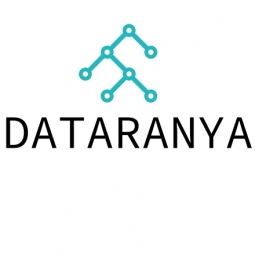
|
Digitalising QC records
Ready-mix concrete batching plant with seasonal demand 6,000 to 12,000 cu.metre per month.Batch-cycle records for each truck is stored in paper format. 1000 to 2000 truck loads per month, generating ~2000 to 6000 paper records.QC anomaly detection in chemical batch-mixing is manual & time consuming.
|
|
|

|
Maverik Motion Picture Productions
When we first met the team at Maverik Motion Picture Productions, it consisted of 5 full time members of staf. As with many businesses, they were working from a central ofce and sharing one handset between them. As the company grew, this started to become problematic and due to the nature of the business, each member of the team was spending a lot of time on site with clients. This created a real need for each team member to be able to work remotely, using their mobile phones. The businesses central ofce was being rented, which meant the idea of a permanent solution would not be suitable, as they may need to expand or move in the near future.
|
|
|
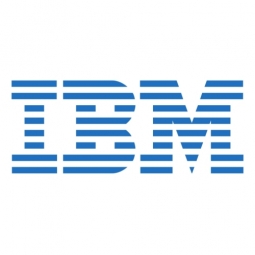
|
Automotive manufacturer increases productivity for cylinder-head production by 2
Daimler AG was looking for a way to maximize the number of flawlessly produced cylinder-heads at its Stuttgart factory by making targeted process adjustments. The company also wanted to increase productivity and shorten the ramp-up phase of its complex manufacturing process.
|
|
|
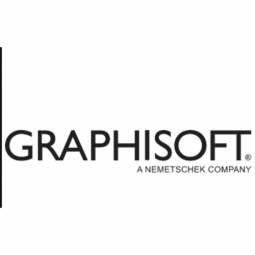
|
BIM Technology for Poniente Residential
The main challenge, apart from meeting the demands of the client, was to create a building that fits two very different realities: one based on an existing urban environment dominated by vehicles, with wide roads and streets, and another based on a non-existent reality, a reality that we would create from scratch. A “domestic” and user-friendly identity, where one could escape from the outside world’s aggressive way of life.Early on that, the scale of the building would be enormous, so large that it led us to think in the same terms of scale when planning the façades of the building and at the same time, it led us to the election of large groups that, in tune with the rest of the building, would lend it harmony and calm.
|
|
|

|
AdventHealth Orlando Enhances Security with PlateSmart ARES Solution
AdventHealth Orlando, one of the busiest hospitals in the U.S., faced significant security challenges. Despite having a well-trained security staff, the hospital needed additional surveillance to monitor activities that could not be covered by human personnel alone. This was particularly crucial in situations where a person was quickly dropped off at the emergency room by a driver who then left the scene. The hospital staff found it challenging to document such incidents and identify the driver reliably. Additionally, the hospital required real-time analysis of traffic entering and leaving the premises to understand parking usage by staff and patients at different times of the day. This data was critical for the efficient operation of the hospital and future growth planning. Lastly, the hospital needed a secure automatic access control system for its staff garage. The existing methods required excessive human intervention and failed to prevent non-staff from parking in the garage.
|
|
|
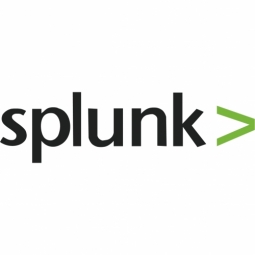
|
Honda's Predictive Analytics Revolution: Boosting Profitability and Efficiency
Honda Manufacturing of Alabama (HMA), the largest light truck production facility of Honda, was facing a significant challenge in terms of data utilization. Despite generating a vast amount of data from the assembly floor, the plant lacked the ability to leverage this data for insights into parts, equipment, and machines. This lack of visibility forced the team to adopt a reactive approach to troubleshooting, which was inefficient and often led to machine failure or interruptions in the production line. The inability to predict and proactively address issues was hindering the plant's efficiency, safety, and profitability.
|
|
|

|
Saving millions with a predictive asset monitoring and alert system
The challenge was to harvest and sift through this data, recognize the patterns that indicate a high likelihood of asset failure, identify the most urgent issues, and get the right information to its engineers with enough lead time for them to take effective action.“Before, we only used between 10 and 12 percent of the operational data we collected, which is the industry average,” comments Benn. “By the time we had searched for, collated and forwarded the right information to the right people, we might respond too late to avoid impact to operations, or have to make last-minute changes to our maintenance schedule, which reduces efficiency. Our challenge was to provide right-time, actionable, effective information proactively, rather than in a reactive or look-back assessment.”“What we wanted was a way to identify patterns in that sensor data that would give us an early warning of asset failure. We saw an opportunity to use analytics technology to extract greater value from the systems and data we already possessed, which would help us to, for example, avoid preventable failures and potentially save millions of dollars.
|
|
|
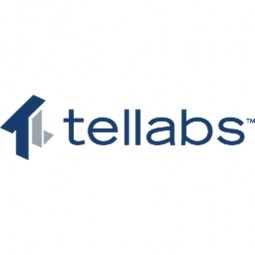
|
ECSI installs Tellabs Optical LAN to Help Kraus-Anderson Building's Network
Kraus-Anderson (K-A) invested in constructing a new 100,000 square foot corporate headquarters in downtown Minneapolis to create a state-of-the-art campus that enabled a modern collaborative work environment, and above all, helped them attract, retain, and develop the best employee talent possible in this progressive metropolitan setting. Kraus-Anderson also knew that this forward-looking 5-story building, and its elite workforce, would demand an equally high-performance and secure network, with ubiquitous accessing through either wired or wireless connectivity.The main saught after feautres were space savings and strict security.
|
|
|
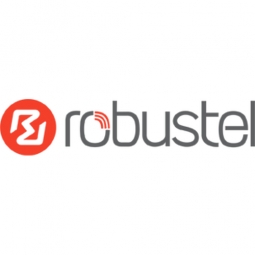
|
Intercake – Deploying IoT Connected Cake Printers to Supermarkets Across the UK
Reliability of Cellular Connectivity - How could Robustel help Intercake ensure printers located in supermarkets across the UK with varying RF environments all worked flawlessly?Qualifying Data Usage - How could Intercake use the data counting and analytical tools available inside all Robustel devices to manage airtime costs and prevent 'bill-shock'?Capital Expenditure for Connectivity - How could Robustel work with Intercake to make sure they had a solution that was fit for purpose but not 'over-engineered' to ensure maximum return on a nationwide roll-out?
|
|
|
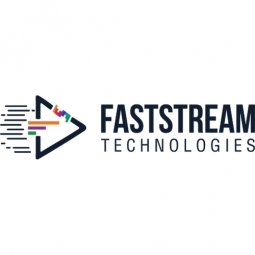
|
ENTERPRISE IoT
This settled organization was quick to secure its market position and future development openings in an evolving world. As a provider of keen entryway related “things” – their association with clients was more value-based than shared. Its marked passage items gambled commoditization, and the absence of profound associations with clients made holes and open doors for contenders to wear down a piece of the pie. Client input circles were difficult to build up, hampering extension openings inside existing records.The absence of direct client association likewise introduced huge difficulties when items were utilized inaccurately. Sorting out what occurred afterward was tedious and disagreeable.Despite the fact that upkeep and buying rules were set to advance quality, the procedure was manual and defective. Discovery units had expected life expectancies, however without clear and current information, it was difficult to check their actual compelling execution period. Substitution calendars could be excessively proactive or lack.
|
|
|

|
Improving “people flow” in 1.1 million elevators globally
KONE already provided traditional maintenance services for its more than 400,000 building owner and facilities management customers, but it sought cloud-based analytics technology to capture and use the vast amount of data generated by its elevator and escalator equipment worldwide to transform its service offerings. “We knew that digitalization was changing the industry, and we wanted to become a forerunner, not a follower in this development,” says Markus Huuskonen, the Director of Maintenance Processes and Connected Services at KONE.
|
|
|

|
Magic Spoon Simplifies Production Management Workflow with Anvyl
Simplify their supply chain workflowIncrease communication with suppliersMore time to fix data discrepanciesAdvance notice when delays were expected
|
|
|
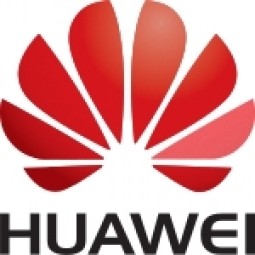
|
Unified Quality Inspection Standards for Brand Owners and Multiple Factories
In the 3C industry and the automotive industry, the consistency of the measurement standards of upstream parts processing manufacturers and OEMs is important. How to quickly and efficiently sample the quality of parts according to the standards after OEM manufacturers receive parts, digitize the test results in real-time and share with other business systems and make them traceable, are common pain points in the industry.
|
|
|
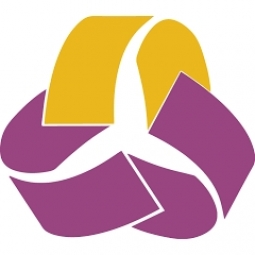
|
Surface Defect Inspection of 3D Line Laser Scanning Auto Tire Radius Pattern
From the pursuit of car ownership to the pursuit of higher quality and safe cars, tires are an important part of car safety.
|
|
|
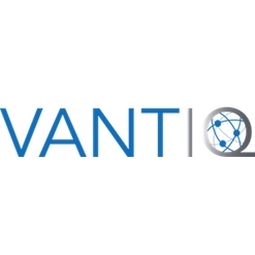
|
Developing a Smart City of the Future: The Case of Port City Takeshiba
SoftBank, a leading global telecommunications company, was seeking innovative ways to expand their business and better serve their customers. With the proliferation of IoT sensors and connected devices across virtually all industries, SoftBank recognized the need for a platform to develop real-time applications to leverage these technologies and address everyday city life challenges. They aimed to create a testing ground for developing, deploying, and integrating real-time applications for various city functions such as food delivery, security monitoring, personalized billboards, automated cleaning, public transportation, and more. This led to the creation of Port City Takeshiba, a real-life sandbox in the heart of Tokyo, Japan. However, orchestrating all these different city systems and providing a seamless experience for both employees and visitors to Takeshiba required a reliable way to develop and deploy real-time smart city applications.
|
|
|
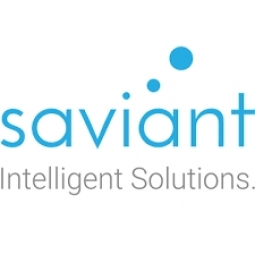
|
Real-time Data Engineering for Industrial Systems Testing & Monitoring
The UK-based instruments engineering company was facing challenges with their existing system of capturing, managing, and analyzing data from live machines and systems. The sensors installed on various components of industrial equipment like turbines and pumps captured physical data at a high frequency, which was then managed and analyzed locally on desktop-based systems. This resulted in manual, inaccurate, and time-consuming fault detection. The company decided to automate data collection, enable cloud-based data processing, and implement AI-based fault detection. However, they faced several challenges including the difficulty of scaling and deploying traditional predictive tools, the need for predictive analytics to be embedded within their application, the requirement of expertise for data preparation, cleansing, choosing the right algorithm, training, and validation, and the need for the platform and application to easily integrate with all hardware products.
|
|
|

|
Agilent Technologies: A Case Study on Energy Efficiency through IoT
Agilent Technologies, a leading American public research, development, and manufacturing company, was seeking ways to reduce its energy and water consumption to lower its environmental footprint and operating and maintenance costs. The company identified lighting as a significant area where immediate savings could be achieved. The existing lighting system was inefficient, often leaving all 50,000 square feet of lights on unnecessarily, leading to significant energy wastage. The company was also looking to reduce its operating expenses and meet sustainability targets. The challenge was to find a solution that would provide complete control over the lighting systems at their facility, reduce energy consumption, and offer flexibility in programming.
|
|
|
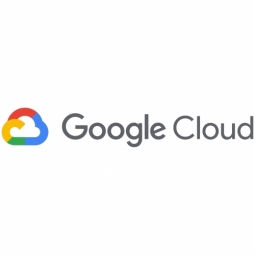
|
Benetton Group: Enhancing Customer Experience with AI and Cloud-Based Analytics
Benetton Group, a globally recognized fashion company with a network of 4,000 stores, was faced with the challenge of improving its online customer experience during the COVID-19 pandemic when physical stores were shut. The company had already digitized its shopping experience and built a marketing data lake to understand its customers better. However, it sought to enhance its recommendation tool for online customers and provide a more personalized, real-time shopping experience. The existing content management solution had a built-in recommendation tool, but it lacked sophistication. Benetton Group wanted to leverage advanced analytics and AI to gain detailed insights into shopping patterns, store performance in a multichannel environment, and how to localize recommendations for a global customer base.
|
|
|

|
AGM Creates Revolutionary New SCADA Communication Tool with CalAmp Solutions
Today, interoperability is a challenge. Communicating between programmable logic controllers (PLCs) from different vendors and with other peripheral devices on the same system presents difficulties. Industrial IoT companies rely on remote devices to control, monitor and maintain the health of their systems. The RTU, or remote terminal unit, transmits telemetry data to the PLC via the DCS or SCADA system and uses messages from them to control connected objects. For example, oil and gas companies need to know the status of pressure and volume on their pipeline. They may need to open or close valves depending on the conditions, which operators would do by communicating with the RTUs.When updates to the hardware were required, these companies were faced with limited options. They could either buy more devices from the same vendor, which was restrictive. Or, they could purchase from another manufacturer and then invest more time and money to have their SCADA integrator reprogrammed.
|
|
|
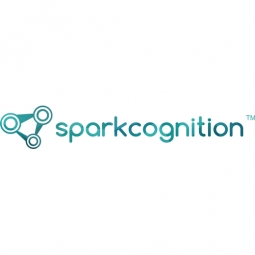
|
Predicting Rare Failures in Hydro Turbines
Utility companies that operate hydro turbines have a vested interest in performing regular maintenance to prevent unexpected failures. Most maintenance occurs on a scheduled basis where the asset is taken offline, inspected, and repaired proactively if needed. Hydro turbine units are highly reliable, meaning that few examples of unplanned downtime exist. However, these failures are very costly to their operators.Given the sensitivity operators have to unplanned downtime, many have equipped turbines and generators with sensors and platforms to collect valuable performance information in real-time. But because there are so few historical hydro failures to compare against, rich streaming data and legacy statistics-based analysis are not very accurate at predicting true failure events. In fact, they often create more problems by overloading monitoring teams with benign false positives that result in unnecessary downtime to evaluate. This begs the question: Can artificial intelligence help maintenance teams extract more value out of their data?
|
|
|

|
High Performance Computing (HPC) Solution
A bank needed to upgrade its custom-made software system to a High-Performance Computing (HPC) solution. The bank was looking for HPC for the purpose of complex computations to offer its clients with information to make capital markets buying/selling decisions, risk modeling, and faster analysis for future trades.The bank requirement was to replace a custom-made data processing system with a High-Performance Computing (HPC) solution to perform financial computations including risk modeling, predictive analytics, etc.
|
|
|

|
Thing-Space Manage
ThingSpace Manage is a self-service portal to manage the IoT device's connectivity on the Verizon Wireless Network. Using ThingSpace Manage IoT device usage can be tracked, active service, set up automatic alerts, troubleshoot device connectivity, and more.
|
|
|

|
How a major player in the oil & gas industry decreased downtime
Sean Simon is the SVP of Operations at CIG Logistics, where sand is transloaded and stored for third parties in the oil and gas industry. Before looking into CMMS solutions, his team spent three years trying to manage their maintenance operations with a paper-based system, leaving them with the major issue of not being able to gather or access data. “There’s no way to mine paper. There was no daily summary, no way of tying together comments or keywords.” As a result, trying to track and schedule preventive maintenance was nearly impossible. “It was like owning a car in the 1950s. You had to try to remember the last time you did something and guess at the maintenance that needed to be done in the future”.
|
|
|
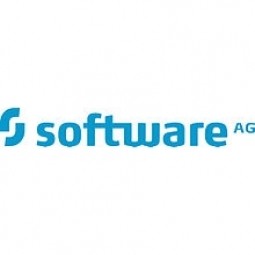
|
Optimizing Business Operations with IoT: A Compilation of Case Studies
The case study compilation presents a variety of challenges faced by different organizations across various sectors. Medical Industrie GmbH & Co. KG needed to optimize and streamline their B2B sales. Bank Sinarmas needed to comply with Indonesian Open-API Standards and exploit the ecosystem economy. MUDUM required a platform to harness the power of the API-driven ecosystem economy. OCP Group needed to standardize their APIs. Al Barid Bank was in the process of digital transformation. Marsa Maroc needed to digitalize its business workflows. PharmLog required an integration platform for seamless pharma logistics. Lufthansa Technik AG needed a B2B integration environment for standardized customer engagement. Socomec needed a hybrid integration tool to boost security and improve efficiency. Hellmann needed to integrate more than 750 application interfaces and over 500 customers.
|
|
|
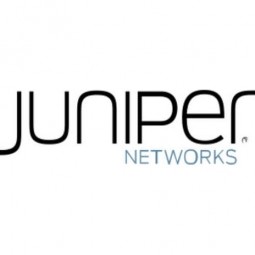
|
ZettaNet's Agile Juniper Network Meets Booming Digital Demand in Australia
ZettaNet, a privately-held company based in Perth, Australia, was facing a significant challenge due to the exponential demand for enterprise network, data center, and cloud services in the region. The company's business growth necessitated an upgrade of their core network to meet the increasing bandwidth requirements of their customers. The customers, which primarily include managed service providers, were demanding 1 Gbps connectivity between locations. These service providers then deliver network, data center, cloud, and voice services to a diverse range of customers including local businesses, schools, hospitals, residential communities, and government offices in Western and Southern Australia. The challenge for ZettaNet was to meet this high-capacity network services demand while maintaining profitability.
|
|
|
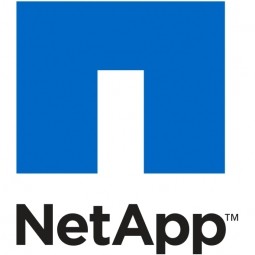
|
Zensar and NetApp: Accelerating Enterprise-Wide Digital Transformation
In the digital era, businesses are striving to deploy high-quality experiences faster to succeed. The acceleration of technology innovation and the aspiration to adopt digital business models present challenges for organizations to meet their business needs. Managing multicloud environments has been a significant challenge for many customers due to different consoles, teams, and skills required to realize the benefits of these clouds. Business leaders are mandating their IT departments to consolidate IT infrastructure to save energy costs, host more applications, share resources across different departments, and enhance security. These requirements often translate into fewer data centers and consolidated server, networking, and storage resources that can host multiple applications shared by multiple departments.
|
|
|

|
Energija Plus Enhances IT and SAP HANA Services with Unistar PRO.cloud Supported by NetApp
Unistar LC, a leading ICT provider in Slovenia, was facing a challenge in facilitating customer access to the cloud. The company had developed more than 10 brands, including Unistar PRO.cloud for hosted and managed IT services, but needed a scalable, cost-efficient, and reliable platform to enhance this offering. Despite being a NetApp partner for over a decade, Unistar LC was uncertain about choosing NetApp solutions. The company needed to ensure that the chosen solution would provide the best value for money, a quick return on investment, and compliance with Slovenia’s strict data protection regulation. Additionally, Slovenia's data protection laws do not allow personal data to leave the European Union or even the country in some cases, which ruled out the option of connecting to an Amazon or a Microsoft cloud.
|
|
|

|
Implementing a Next-Gen MES for Medical Device Production at a Fraction of the Cost
A Medical Device Manufacturer was faced with the challenge of scaling up production for a new product introduction (NPI) within a 6-month timeline in a new greenfield assembly facility. The goal was to increase production from a few units a month built by engineers to hundreds of units a month by frontline workers. The engineering team needed to enable the frontline workers to assemble the units and record their activities at each step of the way via an eDHR for compliance purposes. The team foresaw challenges around overwhelming new staff with changing instructions and recording information. They concluded that using paper-based SOPs and history records was not a viable or efficient solution for onboarding a completely new team.
|
|
|
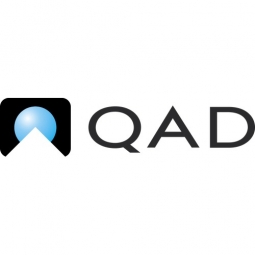
|
CK Technologies: Leveraging QAD Explore for Continuous Improvement
CK Technologies, a leading thermoplastics solutions provider in the North American commercial heavy truck market, faced a significant challenge in maintaining continuous improvement in their business practices. This was particularly difficult due to the nature of their low volume, high variability business. The company produces a wide variety of parts for multiple customers, supplies parts for current truck models, and also the service parts for past design versions. They are also one of the first companies in the industry to supply parts in body color for each customer, approximately 1,400 colors a year, which have to be perfectly sequenced for shipment. This complexity in their operations made it challenging to stay informed and inspired to accomplish continuous improvement.
|
|




